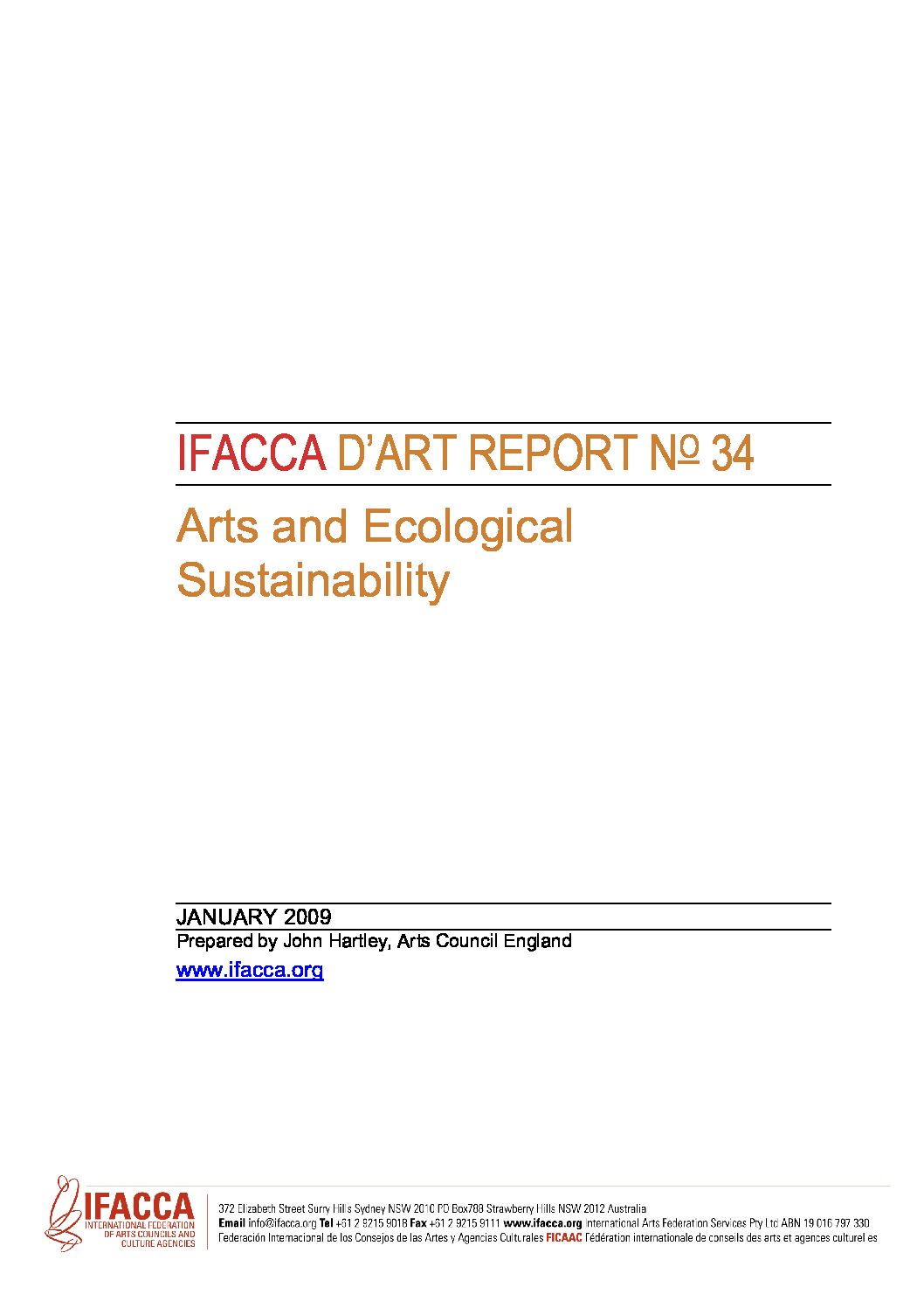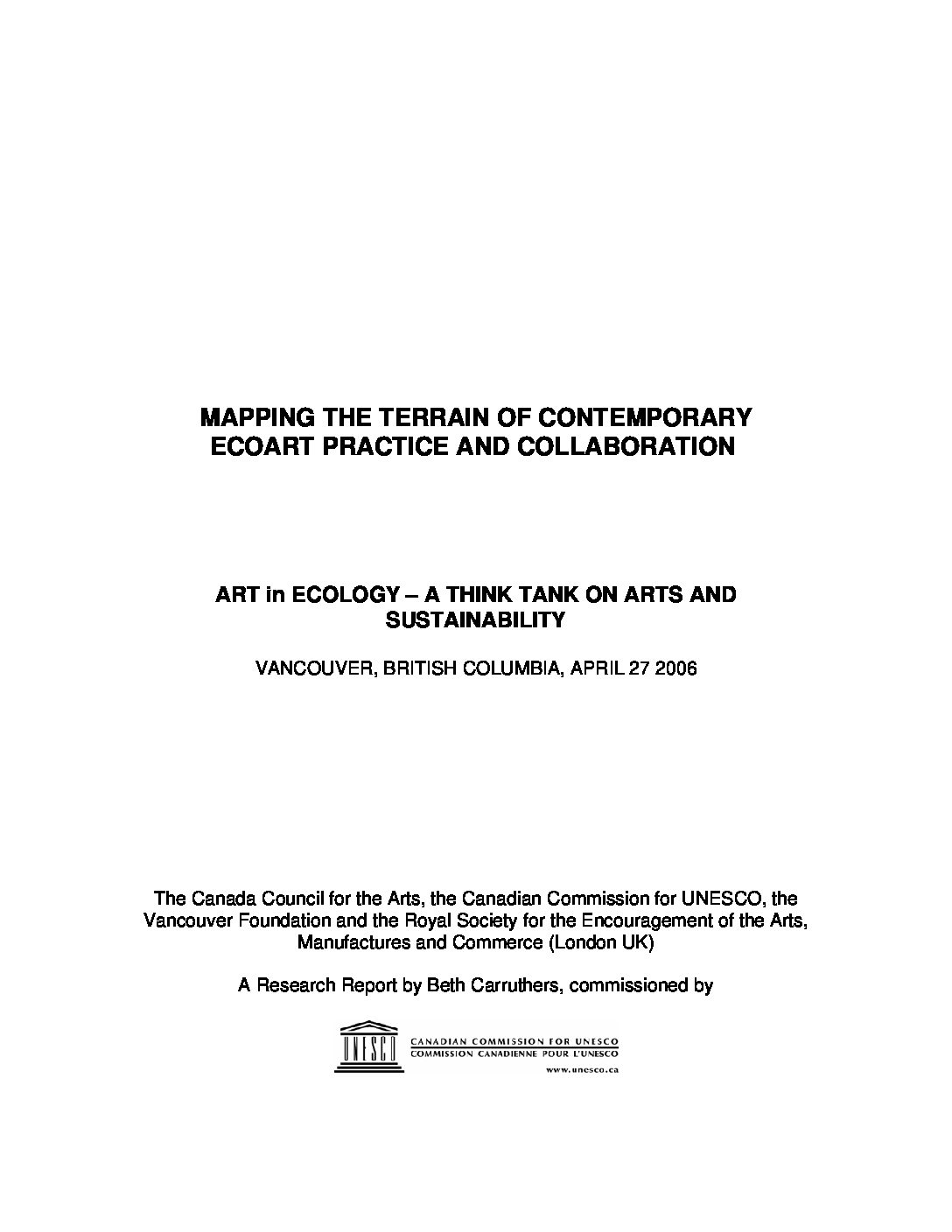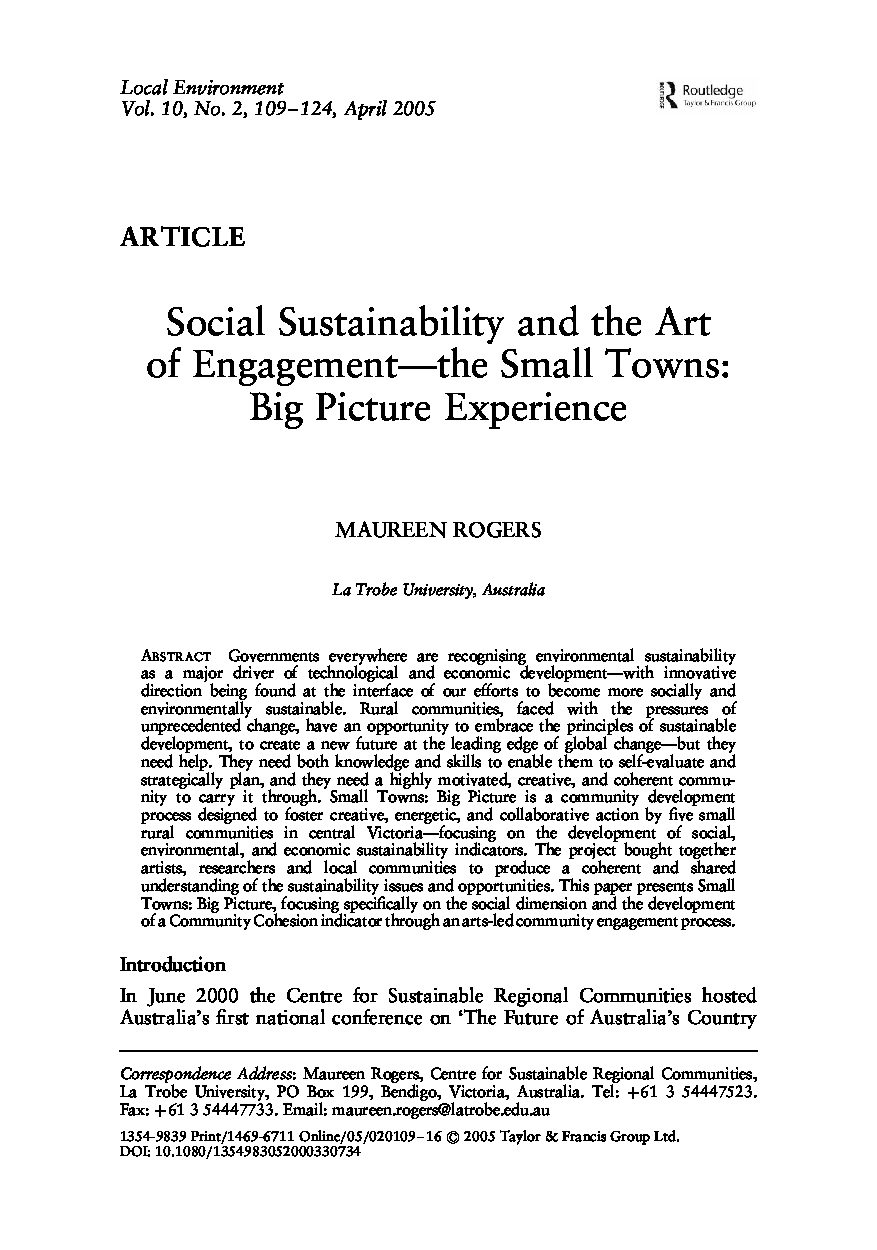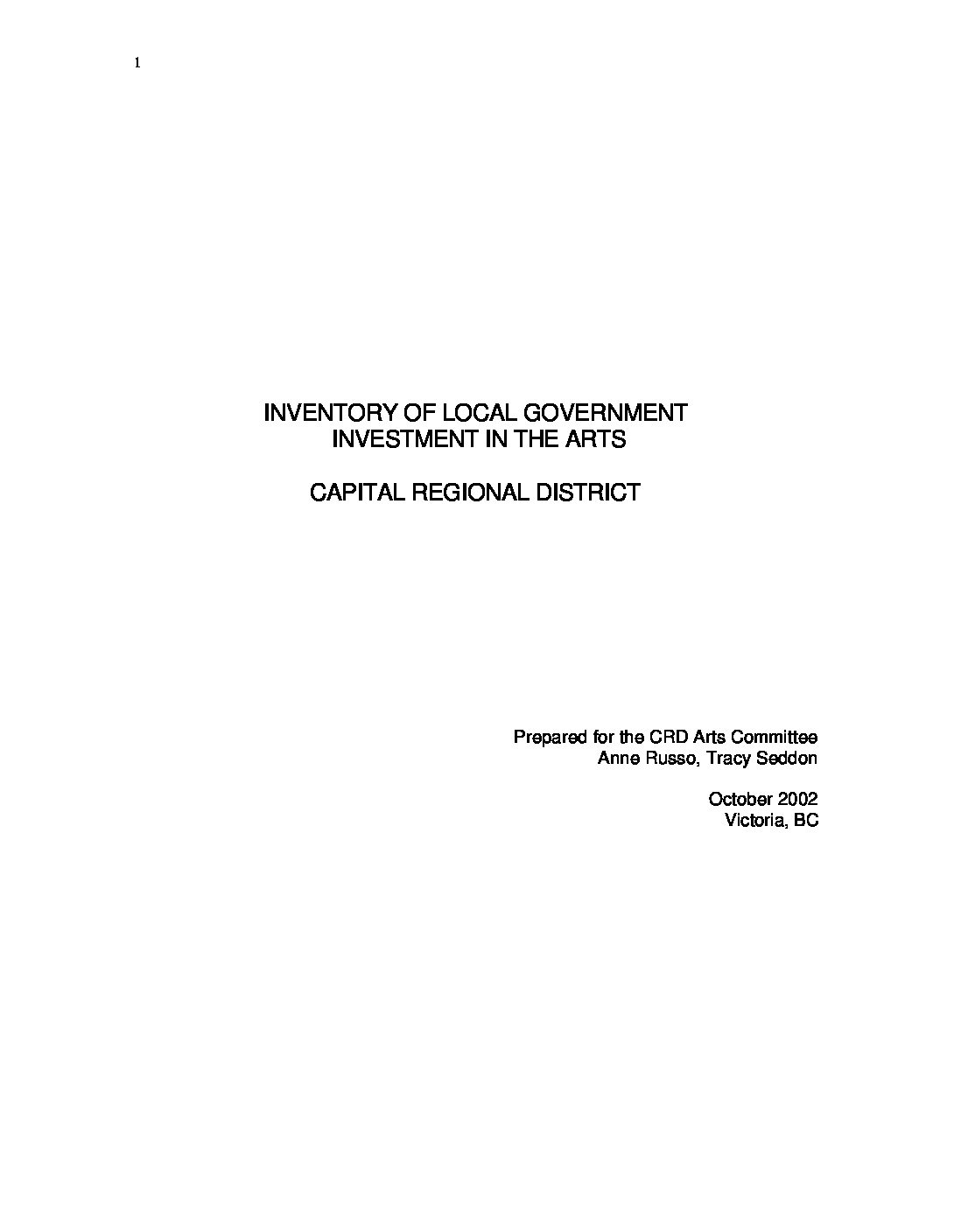-

Arts and Ecological Sustainability Report – 217KB (2009)
This report provides examples of good practice in supporting artists or arts organisations with creative and practical responses to ecological concerns. The research was undertaken in collaboration with Arts Council England, which was looking to identify potential partners with whom to develop its own work in this area. This report contains a commentary and analysis of the responses to the D’art query from IFACCA’s network written by ACE’s John Hartley, and includes background and context, a full digest of responses, and links to information resources.
-

Mapping the Terrain of Contemporary EcoART Practice and Collaboration – 167KB (2006)
Explores trends, issues and advances in EcoART collaborations among artists, environmental groups, communities and scientists. Beyond this, it considers suggestions for the future of such collaborations, including how this work might be better supported. In order to be locally-relevant to meeting participants, there is a particular focus on Canadian works and more specifically, on those from the Western part of the country. The intention of this report is to provide an overview of collaborative practice in arts and ecology, rather than projects, and so while specific projects and/or practitioners are brought forward as illustrative, this paper is not meant as a catalogue of practitioners or works.
-

One Vision, Many Voices: How to Build a Sustainable Rural Canada – 4026KB (2008)
In July 2008, the Alberta Association of Municipal Districts and Counties (AAMDC) hosted a national symposium – Rural Matters! Forging Healthy Canadian Communities. The goal was to bring together delegates from across the nation to discuss important issues pertaining to rural Canada. Over the course of the symposium, eight rural sustainability workshops were held to help set key priorities for rural Canada to focus on in the years to come. Based on the common themes of these priorities and other discussions held during the symposium, seven recommendations were derived to be presented to governments and stakeholders on how to build a sustainable rural Canada.
-

Per capita funding of culture by major municipalities – 46KB (2002)
Prepared for City of Toronto, Culture and Tourism. City of Toronto staff report on the development of per capita funding of culture benchmarks by major municipalities that includes both direct activity and general grant funding.
-

Social Sustainability and the Art of Engagement—the Small Towns: Big Picture Experience – 167KB (2005)
Governments everywhere are recognizing environmental sustainability as a major driver of technological and economic development—with innovative direction being found at the interface of our efforts to become more socially and environmentally sustainable. Rural communities, faced with the pressures of unprecedented change, have an opportunity to embrace the principles of sustainable development, to create a new future at the leading edge of global change—but they need help. They need both knowledge and skills to enable them to self-evaluate and strategically plan, and they need a highly motivated, creative, and coherent community to carry it through. Small Towns: Big Picture is a community development process designed to foster creative, energetic, and collaborative action by five small rural communities in central Victoria—focusing on the development of social, environmental, and economic sustainability indicators. The project bought together artists, researchers and local communities to produce a coherent and shared understanding of the sustainability issues and opportunities. This paper presents Small Towns: Big Picture, focusing specifically on the social dimension and the development of a Community Cohesion indicator through an arts-led community engagement process.
-

Victoria, BC – Inventory of Local Government Investment in the Arts in the CRD – 129KB (2002)
An inventory of Local Government investment in the Arts in the thirteen municipalities and the electoral areas of the Capital Regional District of British Columbia, October 2002.
